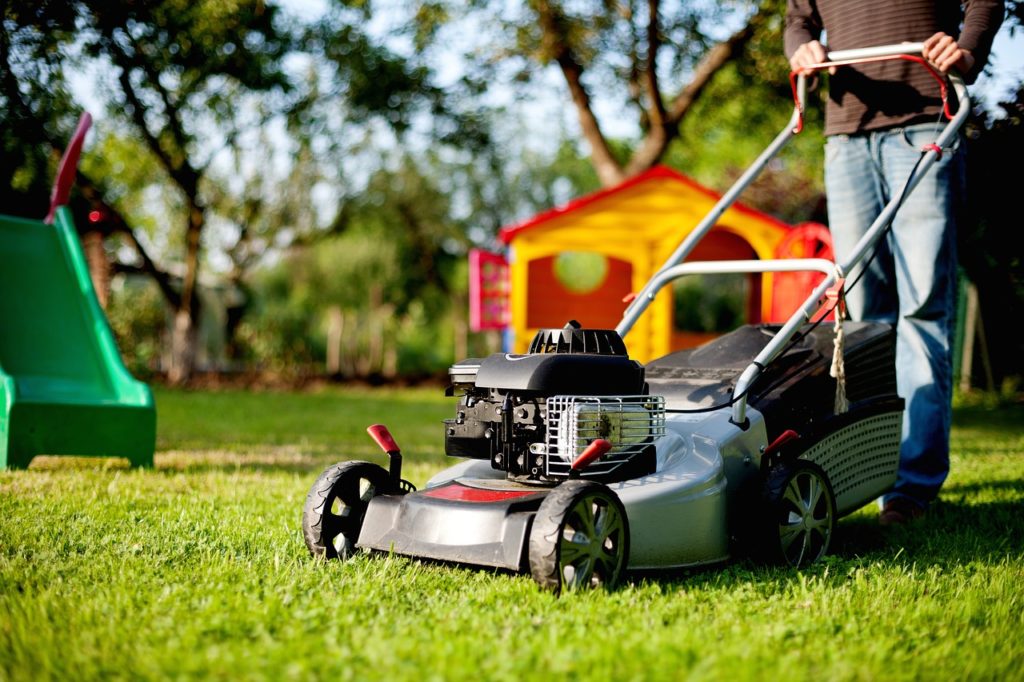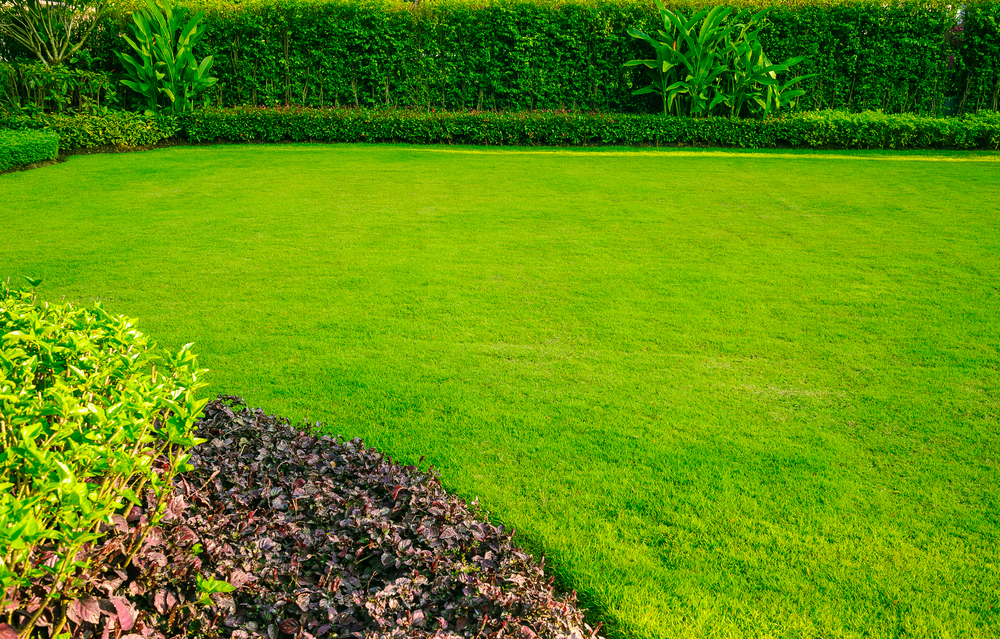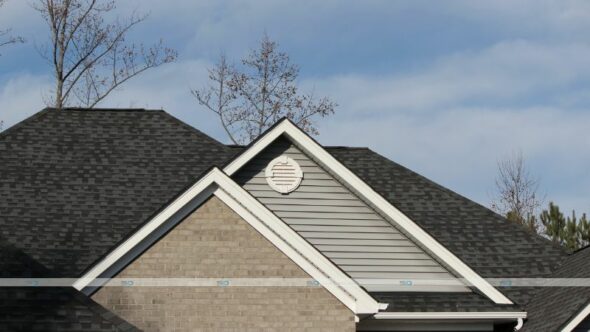The signs of a chemically-dependent lawn are obvious – sparse grass, moss & mildew, yellow spots, insect damage and a spongy feel underfoot caused by a buildup of thatch.
The US Environmental Protection Agency reports that Americans dump over 90 million pounds of chemical pesticides and herbicides on their lawns. Plus, since the chemicals don’t treat the cause of the problem, they must be purchased and used again and again in order to keep the problem under control. This is great for the lawn chemical manufacturer, but extremely detrimental to the health of people, animals and the environment.
Because homeowners’ use of chemical fertilizers, herbicides and pesticides is considered by the EPA to be heavy, they report that these chemicals likely migrate into homes, further exposing people and pets to their harmful effects.

Via https://pixabay.com/photos/lawn-mower-lawn-mowing-rush-mow-2127637/
Organic Lawn Care Gets to the Root of the Problem
More and more people are discovering that organic lawn treatment is much more effective in the long run for producing a lush green lawn. Following are five easy & inexpensive tips to help create a lawn treatment that will be the envy of the neighborhood. Moreover, if you want a beautiful-looking lawn, you may want to hire a residential or commercial lawn mowing company or a landscape maintenance services company to take good care of your lawn.
Aerate the Lawn
Aerating a lawn literally punches holes through the turf and into the soil. These holes increase the circulation of air and water around the roots of the grass. This encourages the growth of healthy microorganisms that destroy thatch, the layer of dead grass that suffocates the lawn.
Lawn aeration also encourages the roots of the grass to grow deeper. A strong, deep root system is a lawn’s best protection against drought.
It’s best to aerate either in the fall or the spring, when the soil is damp but not saturated. The do-it-yourselfer can rent an aerator from a local home improvement store.
Raise the Mower Blade
Grass that’s cut higher is healthier overall that grass that’s clipped short. Agreenhand, a lawn care expert said “This is true for a couple of reasons. First, longer grass has more surface area to hold water and nutrients. Also, taller grass will shade the weeds, discouraging their growth.” However you still need to keep it at certain level, you can cut it with the .095 trimmer line.
Use Organic Fertilizer
Quick-release synthetic fertilizers give a quick green-up to lawns with a strong hit of nitrogen. However, this does nothing to promote strong root growth or make the soil healthier.
Also, synthetic fertilizers are comprised primarily of chemical salts, which are extremely harmful to earthworms and other beneficial insects and microorganisms living beneath the surface. If you some of that synthetic fertilizer splashed on your face, you should go to your emergency eye care center immediately.
Organic fertilizers, on the other hand, release nutrients slowly, the way nature intended. You can get organic fertilizers even at a ZVI Wholesale dealer. They have a complex, natural composition of chemicals that encourage the roots of the grass to consume them only when they’re needed, rather than force-feeding them like synthetic fertilizers do. This encourages a deep, strong root system.
Organic Fertilizers Also Nourish the Soil
Natural fertilizers are like superfood cocktails for the soil and should be on your list of lawn care supplies. They contain micronutrients and live beneficial microbials and bacteria, which naturally increase the oxygen level in the soil. The environment within the soil becomes more diverse and complex, which results in natural pest and disease resistance.
Finally, organic fertilizers don’t burn the lawn like synthetic fertilizers tend to do. And perhaps most importantly, they contain no toxins or ecohazardous chemicals, so they don’t pollute the water or the soil.
Water Less
The more frequently grass is watered, the less “work” it has to do to reach the water. Frequent watering encourages shallow roots, which in turn increases thatch and makes lawns vulnerable to drought. Experts in lawn maintenance recommend watering one inch per week, which encourages the grass to grow a healthy, deep root system. Water in the early morning hours so the water doesn’t evaporate in the heat of the day, and so the blades of grass aren’t wet when it’s dark (which encourages fungal diseases).
Let the Clover Live!
Clover growing in the lawn indicates a nitrogen deficiency. Happily, clover can also bring more nitrogen to the soil. Simply leave the clover clippings on the lawn after mowing; they will slowly add nitrogen to the lawn as they break down. As the nitrogen level increases, the clover will naturally decrease.
Image Credits: Green Lawn from SingjaiStock /Shutterstock







